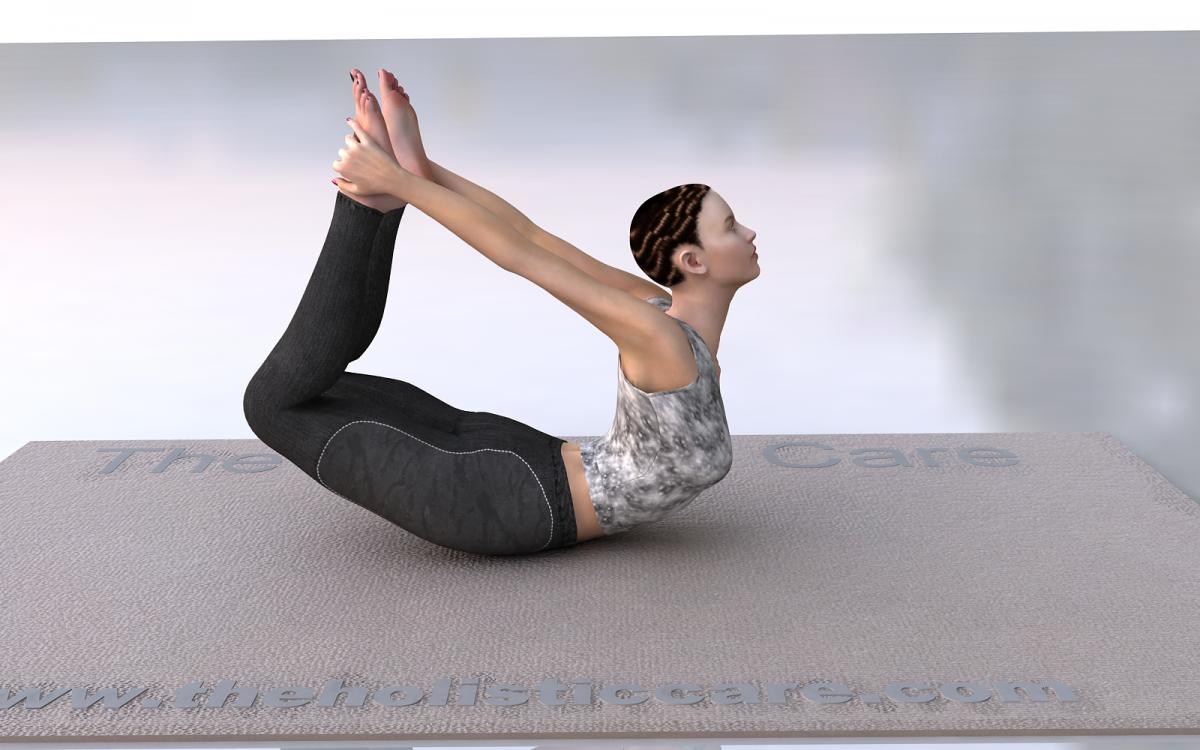In Sanskrit, “Dhanu” means “Bow.” As the body takes the shape of a bow in this asana, it is called Dhanurasana. This pose combines elements of both Bhujangasana (Cobra Pose) and Shalabhasana (Locust Pose), offering benefits from both.

Position of Readiness
- Lie straight on your stomach.
- Keep your arms stretched on both sides.
- Place your hands resting on the floor.
- Bring your legs and heels together.
- Breathe normally.
Steps
- Fold both legs at the knees, keeping them 6 to 8 inches apart.
- Bring the heels close to your hips.
- Firmly grasp both legs near the ankles (right ankle with the right hand and left ankle with the left hand).
- Exhale and inhale while pulling the legs upward with your hands, allowing the body to stretch in a curve. Push the neck backward.
- Try to raise the thighs from the ground along with the shoulders and chest. Push the neck backward as much as possible.
- While releasing, inhale and exhale, bringing both knees, chin, and shoulders slowly to the ground. Leave the ankles and bring the hands beside the body.
- Straighten the folded legs and return to the initial position.
Daily Practice
Practice Dhanurasana three to four times daily.
Benefits
- Activates all the glands of the endocrine system.
- Has positive effects on the pancreas, adrenal glands, thyroid, parathyroid, pituitary gland, and sex glands, leading to normal secretion of respective hormones.
- Improves enzyme production in organs such as the liver, pancreas, small intestine, and large intestine.
- Restores flexibility to the spine, relieving lower back pain and tension in the upper back and neck.
- Increases blood flow in the abdominal area, aiding digestive disorders.
- Improves blood circulation in the arms and legs.
Note
People suffering from back problems, TB in the intestine, stomach ulcers, or hernia should consult a yoga expert before practicing this asana.